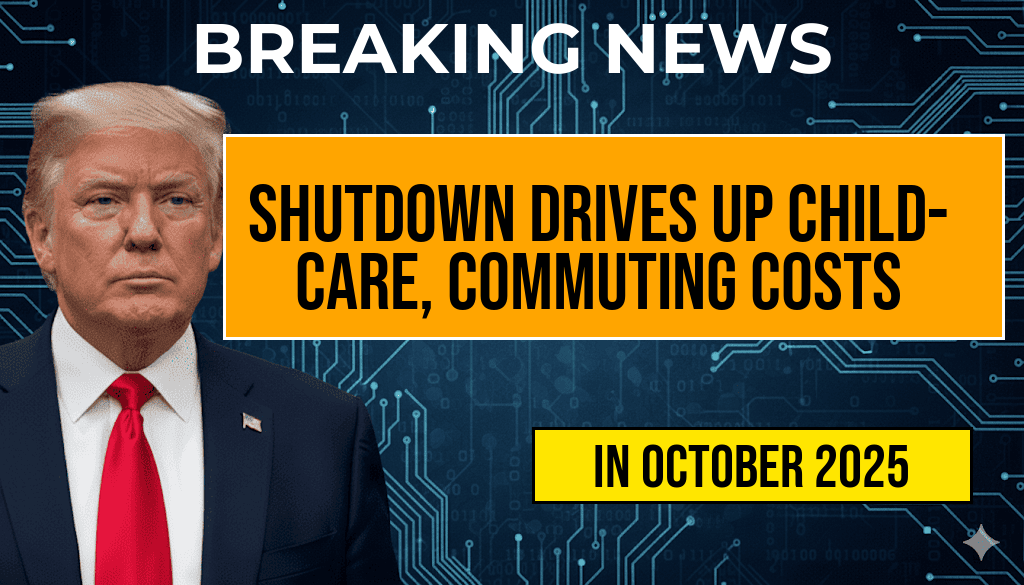Recent federal job cuts are sending ripples through Washington, D.C., as local governments grapple with the fallout. With the economy facing challenges, including a shrinking U.S. dollar, the District and surrounding counties are adjusting their support systems for laid-off workers. The federal workforce, which has long been a pillar of employment in the region, is experiencing significant reductions, prompting concern over job security and economic stability. As local governments respond, they are finding it increasingly difficult to provide adequate assistance to those affected by these layoffs. This article delves into the implications of these federal job cuts and the responses from local authorities.
The Economic Landscape in D.C.
Washington, D.C. has historically relied on federal employment as a cornerstone of its economy. However, recent announcements from various federal agencies signal a shift that could redefine the job market in the area. With the U.S. dollar’s value declining, local economies are feeling the strain, leading to a reevaluation of support services for unemployed individuals. The impact is not just economic; it touches on social aspects as communities adjust to a new normal.
Federal Job Cuts: An Overview
The federal government has initiated a series of job cuts aimed at streamlining operations and reducing budget deficits. These cuts have affected numerous departments, resulting in thousands of employees receiving layoff notices. The ramifications extend beyond the individuals directly impacted, as families and local businesses will also feel the effects of diminished income.
Local Government Response
As the federal job market contracts, local governments in D.C. and nearby counties are struggling to cope with the increased demand for unemployment assistance. Many local agencies have reported a surge in applications for unemployment benefits, job training programs, and financial assistance. However, budget constraints due to the shrinking economy have led to a reduction in available resources.
- Unemployment Benefits: Local unemployment offices are experiencing higher traffic but are limited in their ability to provide timely assistance.
- Job Training Programs: Funding for job retraining programs has been cut, making it harder for laid-off workers to find new employment.
- Community Support Services: Nonprofits and community organizations are stepping in to fill some gaps, but their resources are also stretched thin.
Challenges Faced by Laid-Off Workers
The challenges for those laid off are multifaceted. Many workers are finding it difficult to transition to new jobs in a competitive market that is not only shrinking but also rapidly evolving. The burgeoning tech sector, for example, requires skills that many displaced federal workers may not possess. This skills gap poses a significant hurdle for those attempting to re-enter the workforce.
Impact on Local Economies
As federal job cuts continue, the cascading effects on local economies are becoming increasingly evident. The loss of income affects consumer spending, which is vital for local businesses. Retailers, restaurants, and service providers are all feeling the pinch, leading to a potential slowdown in economic growth for the region.
| Sector | Estimated Job Losses | Projected Decline in Revenue |
|---|---|---|
| Retail | 2,000 | $5 million |
| Hospitality | 1,500 | $3 million |
| Services | 1,200 | $2.5 million |
Community Resources and Initiatives
Despite the challenges, various community resources are emerging to assist laid-off workers. Local nonprofits and workforce development organizations are ramping up efforts to provide support, including:
- Job Fairs: Regular job fairs are being organized to connect job seekers with potential employers.
- Financial Counseling: Workshops to help individuals manage their finances during unemployment are becoming more common.
- Skills Training: Programs aimed at reskilling workers are gaining traction, focusing on industries that are growing despite the downturn.
As the situation evolves, both the local government and community organizations must innovate and adapt to meet the needs of those affected. The ongoing federal job cuts and their implications for workers in the District serve as a reminder of the interconnectedness of government policies and local economies. For more information on the local job market and available resources, you can visit the Bureau of Labor Statistics or the Department of Labor.
Frequently Asked Questions
What are the recent federal job cuts affecting Washington, D.C.?
The recent federal job cuts are significantly impacting the economy of Washington, D.C., leading to a decrease in government positions and resources available for local workers.
How is the county responding to the layoffs?
The county is reducing assistance programs for laid-off workers, which may affect those who are seeking support during this challenging time.
What is the impact of the shrinking USD on local assistance?
The shrinking USD has led to budget constraints, making it difficult for local agencies to provide adequate support to individuals who have lost their jobs.
Are there any programs still available for laid-off workers?
While assistance programs are being cut back, some resources may still be available for laid-off workers, including job training and employment services, though they might be limited.
What should affected workers do during this transition?
Affected workers are encouraged to explore other employment opportunities, seek out available resources, and connect with local job assistance programs to navigate their job search effectively.











